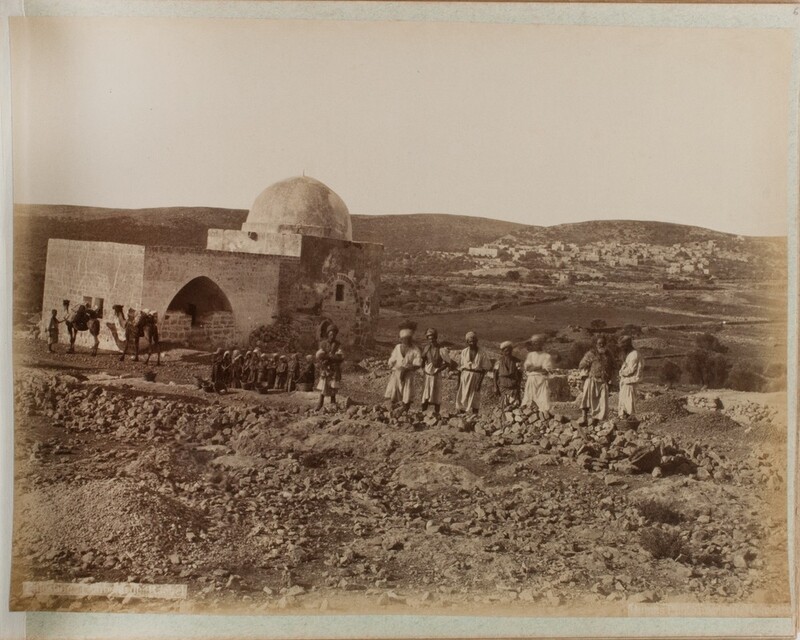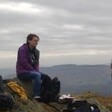Arts and Culture 18 September 2014

Boatmen at Jaffa, c. 1867-1914.
British Library Endangered Archives ProgrammeBetween its establishment in 1867 as the first photographic studio in Beirut and the start of the First World War, the Maison Bonfils photography studio produced thousands of images of Palestine, Syria and Lebanon.
Many of those images — in the forms of negatives, albums full of prints, stereoscopic views, visiting cards and portfolios — were collected by Fouad Debbas, a Lebanese engineer who was, according to project organizers, “passionate about gathering images of his past and his region.”
Now, the British Library’s Endangered Archives Programme (EAP) has helped to digitize a large part of Debbas’ collection, in collaboration with the Jafet Memorial Library at the American University of Beirut and Yasmine Chemali, a Lebanese researcher. After Debbas’ death in 2001, say project workers, his brothers have taken no action to find a safe home for the images, despite their rarity as a major accumulation of late Ottoman-era portraits of the region.
Saving the collection — described by researchers as “the most extensive, varied and richest photographic collection produced in the Levant at the end of the Ottoman period … in fact one of the very few photographic collections produced in Beirut from the late Ottoman period which are still preserved” — was taken up by the EAP as a major priority.

Shepherds carrying sheep across the River Jordan, c. 1867-1914.
British Library Endangered Archives ProgrammeImages of Palestine
Amongst approximately 3,000 images are hundreds showing late nineteenth and early twentieth century Palestine, taken by Monsieur Bonfils and his wife Lydie, said by researchers to be the region’s first female photographer.
Many show famous and holy sites from Islam, Christianity and Judaism such as the Dome of the Rock, the Church of the Holy Sepulchre and the Western Wall. They were probably taken, say project researchers, with the Western market in mind, offering romanticized depictions of sacred and historic buildings.
Others, however, depict ordinary people in Palestine going about their business, such as shepherds, cowherders, boatmen and laborers building roads. As such, they reveal long-lost details of daily life, such as the clothes and appearance of people who didn’t belong to the kind of elite families who might have had private portraits taken.
The images also, say researchers, show the region — known at the time as “Greater Syria” and with Palestine, Lebanon and Syria administered together as part of the Ottoman Empire — at a time of “rapid socio-economic change … a crucial moment of the region’s history. The Bonfils Debbas collection is clearly an invaluable document registering the history of a region at a crucial crossroads in the wake of great historical upheaval [The First World War and fall of the Ottoman Empire] which was about to sweep the region and bring about the Modern Middle East as we know it.”

Village of Sanur in the modern-day West Bank, c. 1867-1914.
British Library Endangered Archives Programme





Comments
Misleading Headline
Permalink Anna Hindley replied on
The photographs - which look fascinating - are no longer under threat. The article clearly states that, despite the collectors brothers doing nothing to preserve the collection, the British Library, in collaboration with others, has stepped in to preserve them.
Digitised, not preserved
Permalink Sarah Irving replied on
If you look more closely, you’ll find that the photos themselves are still under threat. The EAP digitises endangered manuscripts and images, but it cannot remove the objects themselves from the situation they are in, and I absolutely don’t want to detract from the amazing work they and their partners do. But the images are not recorded for posterity insofar as there are now digital prints of them, but the actual negatives and prints - the objects themselves - are in the same precarious position as before, which to me is still very sad.
The Fouad Debbas Collection
Permalink Yasmine Chemali replied on
Dear Sarah, and others commenting on The Fouad Debbas Collection, its owners and the content of EAP 644.
We never said that the Debbas brothers have done nothing to preserve this wonderful collection. On the contrary, they hired someone qualified to protect those images, create a storage room adequate and fitting international standards in terms of preventive conservation, and researchers are being hosted every week to work on this collection.
The Fouad Debbas Collection is part of different local and international initiative to protect modern heritage and acts as an example in our region, the Middle-East. I would appreciate you removing any information of this blog that you cannot verify by yourself and ask the right person to inform you on the condition of the 19th century photographs contained in The Fouad Debbas Collection.
For your information, the Endangered Archives Programme is not a restoration programme but focuses on assessment, inventory and digitization. Restoration campaigns with specialists have been undertaken for the few items in poor condition as well as rehousing campaigns. TFDC has very strict policies in terms of handling and taking care of this heritage, but I do not see why I have to justify our work here while you are apparently a writer not a conservator or head of collection.
I would be pleased to welcome you in Beirut, so you can judge what is being done for this Collection.
Regards,
Yasmine Chemali,
Responsible for The Fouad Debbas Collection,
Beirut, Lebanon.
Graduated from Ecole du Louvre, Paris, specialized in Islamic arts, museology, and preventive conservation.
Enquiry & Support
Permalink Dina Yazbak replied on
Dear Sarah,
I just read your article & I am very interested to know how one might be able to help preserve the original collection, not just the digitisation of the photographs? Do you have a contact for the the Debbas brothers?
Warm regards.
please protect these pictures
Permalink renda dabit replied on
please protect these pictures and let them be shared by the world. it's so many of our histories.
Preserving the originals
Permalink Sarah Irving replied on
Dina, thanks for your message. I don’t have contacts for the brothers; I would suggest that the best place to go for these would be the British Library’s EAP contacts, or perhaps even better the library at AUB which was also involved in the project. Good luck!